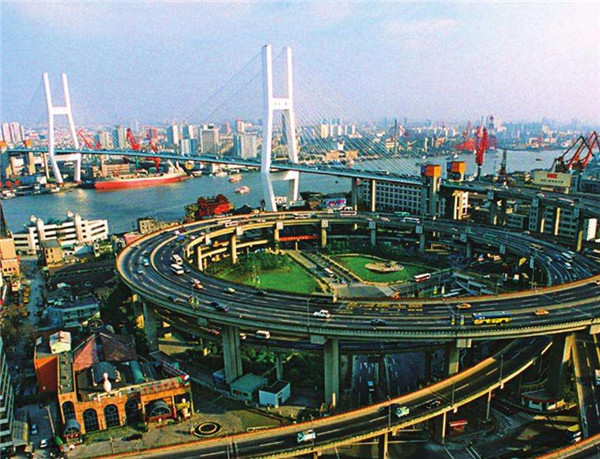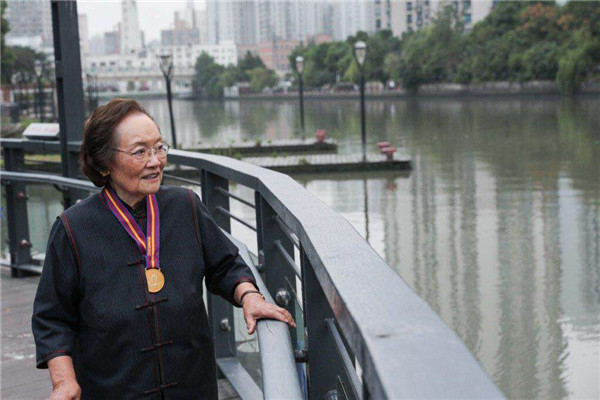
2018-9-5 10:31:03
From:english.eastday.com
Lu Yukun
Linda Tsao Yang: desire for changes helped Shanghai through stalemate and challenges
ADB assistance helped build the first bridges over the Huangpu River

The Nanpu Bridge in 1990s
"I worked for ADB in Manila and had more opportunities to come back to China, and I think Shanghai really entered a new era in the 1990s," said Linda with excitement. "Large-scale development began in Pudong in the early 1990s and the government encouraged enterprises to set up their headquarters there. Meanwhile, the construction of the Nanpu Bridge and the Yangpu Bridge were finished and the metro system began to be expanded in the 1990s."
The construction of the Nanpu and Yangpu Bridges were closed related to the Asian Development Bank, an organization that Linda worked for from 1993 to 1999. Before the 1990s, there were no bridges and tunnels across the Huangpu river, and residents had to be ferried across the Huangpu River, the east of which was not easily accessible to most of the city, making it difficult to expand the city's narrow urban space to Pudong. However, building a bridge across the river was never an easy task, which required a large amount of money and put a high demand on design and construction capability as no bridge piers could be built under the bridge.
"The Asian Development Bank offered great support to the Shanghai government for the building of the Nanpu Bridge and the Yangpu Bridge."said Linda. According to the statistics, the Nanpu Bridge was financed by ADB loans totaling US$70 million and a joint business loan of US$48 million. This was the first joint financing project of the ADB in China. The construction of Nanpu Bridge took three years to complete and more than 7,000 workers and technicians were involved, and 41 new materials were used. The Yangpu bridge, with a record-breaking center span of 602 meters at that time, was financed by ADB loans totaling US$85 million and a joint business loan of US$79 million. The two bridges were inaugurated in 1991 and 1993 respectively, which laid a solid foundation for the development of Pudong and the boom of the service sector in Shanghai in the 1990s.
Linda's devotion to the Suzhou Creek Rehabilitation Project

Linda Tsao pictured beside the Suzhou Creek in October,2016
Suzhou Creek has a long history and is a major transportation waterway in Shanghai. Unfortunately, the whole length of the river had been severely polluted due to the urban development and growing population by the 1990s and posed a health hazard to the people living on its banks. However, the efforts and measures to clean up Suzhou Creek were never a success until 1997.
